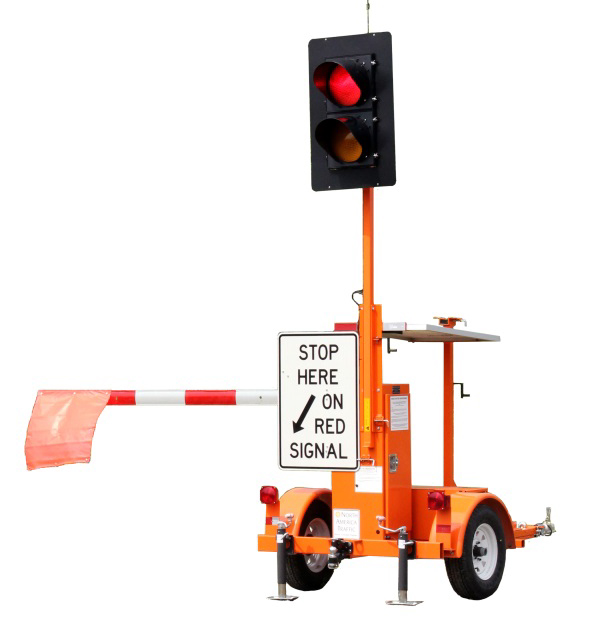
A common call we get from our customers is when they notice on a plan that we have used AFAD devices to SLAT or Intermittent Control Traffic. Part 18 of the OHS regulations states that when TCP controlled single lane alternating is required that:
Order of Control Measures
(i) the use of temporary traffic control devices and traffic arrangements or layouts and procedures to effectively protect workers from traffic travelling by or through a work zone without the use of traffic control persons,
(ii) administrative controls that reduce the number of workers exposed to traffic, such as scheduling work during off-peak hours, and
(iii) the use of traffic control persons only after the control measures set out in subparagraphs (i) and (ii), either alone or in combination, have been considered and determined to be insufficient to manage traffic in the circumstances.
Compass North will always look to remove the need for TCP’s where we can, it keeps everyone on site safer and saves our customers on service costs. When we cannot remove the need for TCP’s we will evaluate if AFAD are suitable for the work zone and if so we will show them on our traffic control plan. We advise that if needed they can be substituted on site with TCP’s if necessary via a on site hazard assessment, but don’t be so weary to have these used on site. These devices remove TCP’s from the risk area, but like so many safety improvements in the construction industry when utilized properly can make an operation more efficient.
What the traffic control manual says about AFAD operation
Two-TCP Operation (Typical):
- One TCP operates each AFAD at either end of the work activity area; or
- One TCP operates an AFAD at one end of the work activity area and the
second TCP controls traffic with a paddle at the other end.
- Single-TCP Operation:
The maximum distance between traffic control stations (TCP or AFAD)
is 250 m.
One TCP positioned in a central location simultaneously operates two
AFADs that are positioned at either end of the work activity area; or
One TCP operates a single AFAD that is positioned at one end of the work
activity area while also controlling traffic with a paddle at the opposite end.
In a single-TCP operation, all of these conditions shall be met:
The TCP has an unobstructed view of the AFAD(s).
The TCP has unobstructed views of approaching traffic in both directions.
The average daily traffic volume on the roadway is 6,000 vehicles or less.
As described in the above clip from the manual, 1 TCP can operate 2 AFAD devices , or paddle one side and AFAD the other. When we place AFAD we will try and accomplish this efficiency. A favorite use is at an intersection, often one TCP can operate the AFAD’s at 2 corners , and be stationed at the cross walk to help pedestrians. When TCP’s are operating SLAT manually with a paddle they must remain physically in 1 position, usually 25-80m from the operation at all times. AFAD’s give some freedom of movement as long as they are within view of and within the 250m distance prescribed.
Also these devices are not complicated at all to use. The devices pair to a controller , the controller can be paired to two gates. Pairing the controller is as simple as pairing a headset to your phone. The controller has 3 buttons, 1 and 3 open the respective gates, and middle button sets both to closed.
My personal safety observation : traffic lights are hard coded into every driver, we stop at red lights and slow down at flashing yellow lights. I have utilized AFAD devices on numerous sites, including highway projects with very long hold times. Safety , compliance from drivers, and traffic staff issues were all improved.
Negatives:
Yes there is some. The tandem tow system required for use in BC is cumbersome – have a crew member give your traffic team a hand to unhook the first trailer.
Poor signage – MoTI has not developed a sign for AFAD devices. Instead it uses a second text based sign. A graphic sign would help drivers be prepared for a device they may not be familiar with.
Use of these devices is mandated by worksafe regardless of duration of the project, so we suggest giving your traffic crew an opportunity to get familiar and comfortable with these or similar devices like the MoTI approved uni-flagger. We are able to show this device on plans at request.